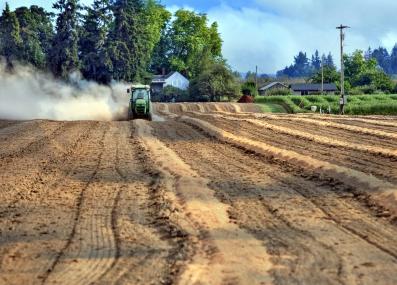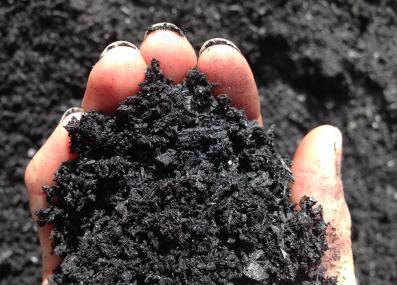New to Climate Change?
Fertilizer and Climate Change
Farmers add fertilizers to their soils to provide crops with the nutrients they need to grow. For thousands of years, humans have used mineral and organic fertilizers, like manure and ground bone, to improve soil fertility.
In the last century, human-made fertilizers have greatly boosted crop production, letting farmers grow more food on less land. But this uptick in fertilizer use has come at a cost: planet-warming greenhouse gas emissions. Worldwide, agriculture is the second-largest source of climate change pollution1—and both the manufacturing and application of fertilizer has a heavy emissions toll.
Climate toll of fertilizers
One of the main nutrients that plants need to grow is nitrogen. But plants can’t take in nitrogen from the air the way they can absorb carbon dioxide or oxygen. In the early 1900s, scientists invented a process to mass-produce a nitrogen-containing compound, ammonia, that plants can absorb from the soil. Today, ammonia is the second-most commonly produced chemical in the world, used in huge quantities as a very effective fertilizer.
This invention revolutionized farming, doubling the number of people that one acre of land could feed.2 But ammonia has to be made at a high pressure under high temperatures—meaning it takes a lot of energy to manufacture. Most of that energy comes from burning fossil fuels like coal and methane gas, which give off the greenhouse gas carbon dioxide, the main cause of climate change.
Fertilizers also produce greenhouse gases after farmers apply them to their fields. Crops only take up, on average, about half of the nitrogen they get from fertilizers.3 Much of the applied fertilizer runs off into waterways, or gets broken down by microbes in the soil, releasing the potent greenhouse gas nitrous oxide into the atmosphere. Although nitrous oxide accounts for only a small fraction of worldwide greenhouse gas emissions,4 pound for pound, nitrous oxide warms the planet 300 times as much as carbon dioxide.5
Between manufacturing and use on farms, fertilizers today contribute an estimated 2% of all greenhouse gas emissions worldwide.6
Making fertilizer more sustainable
Scientists and engineers are working to reduce the high temperature and pressure currently needed to manufacture ammonia. These changes would make it easier to run fertilizer plants entirely on renewable energy or other climate-friendly sources. They would also allow ammonia to be made in smaller factories, making fertilizer more accessible to farmers in developing nations.
To tackle the problem of nitrous oxide emissions, we also need to figure out how to use less fertilizer without sacrificing crop yields. There are a number of ways to do that, from using slow-release fertilizers, to changing when fertilizer is applied, to using sensors to better monitor nutrient absorption by plants.7 Cutting fertilizer use will also require changing policies and regulations that at present encourage farmers to apply more fertilizers to their fields than they need. Some countries and regions are starting to move in this direction. Canada, for example, has invested in helping farmers adopt new agricultural methods with less intensive fertilizer use, with a goal of reducing emissions from fertilizer by 30% this decade.8
Updated July 31, 2025.
1 “Emissions by Sector.” Our World in Data. Using data from the CAIT Climate Data Explorer via ClimateWatch.
2 Erisman, Jan Willem, et al. “How a Century of Ammonia Synthesis Changed the World.” Nature Geoscience 1 (2008). https://doi.org/10.1038/ngeo325.
3 The Royal Society. "Ammonia: Zero-Carbon Fertiliser, Fuel and Energy Store." Feb. 2020.
4 US EPA. “Global Greenhouse Gas Emissions Data.” Greenhouse Gas Emissions, 12 Jan. 2016.
5 Canfield, Donald E., et al. “The Evolution and Future of Earth’s Nitrogen Cycle.” Science 330 (2010). https://doi.org/10.1126/science.1186120.
6 Menegat, Stefano, Alicia Ledo, and Reyes Tirado. "Greenhouse gas emissions from global production and use of nitrogen synthetic fertilisers in agriculture." Nature Scientific Reports 12 (2022). https://doi.org/10.1038/s41598-022-18773-w
7 Houlton, Benjamin Z., et al. “A World of Cobenefits: Solving the Global Nitrogen Challenge.” Earth’s Future 7 (2019). https://doi.org/10.1029/2019EF001222.
8 Agriculture and Agri-Food Canada: "Discussion document: Reducing emissions arising from the application of fertilizer in Canada's agriculture sector." October 2022.









